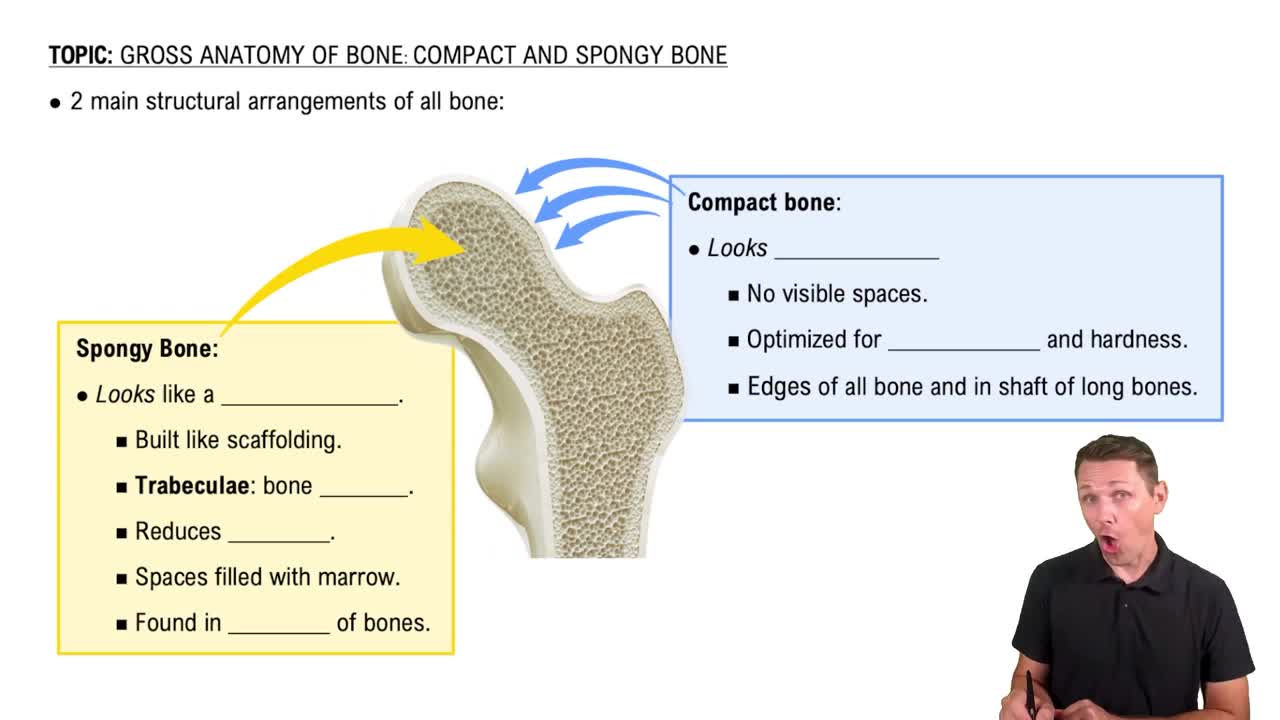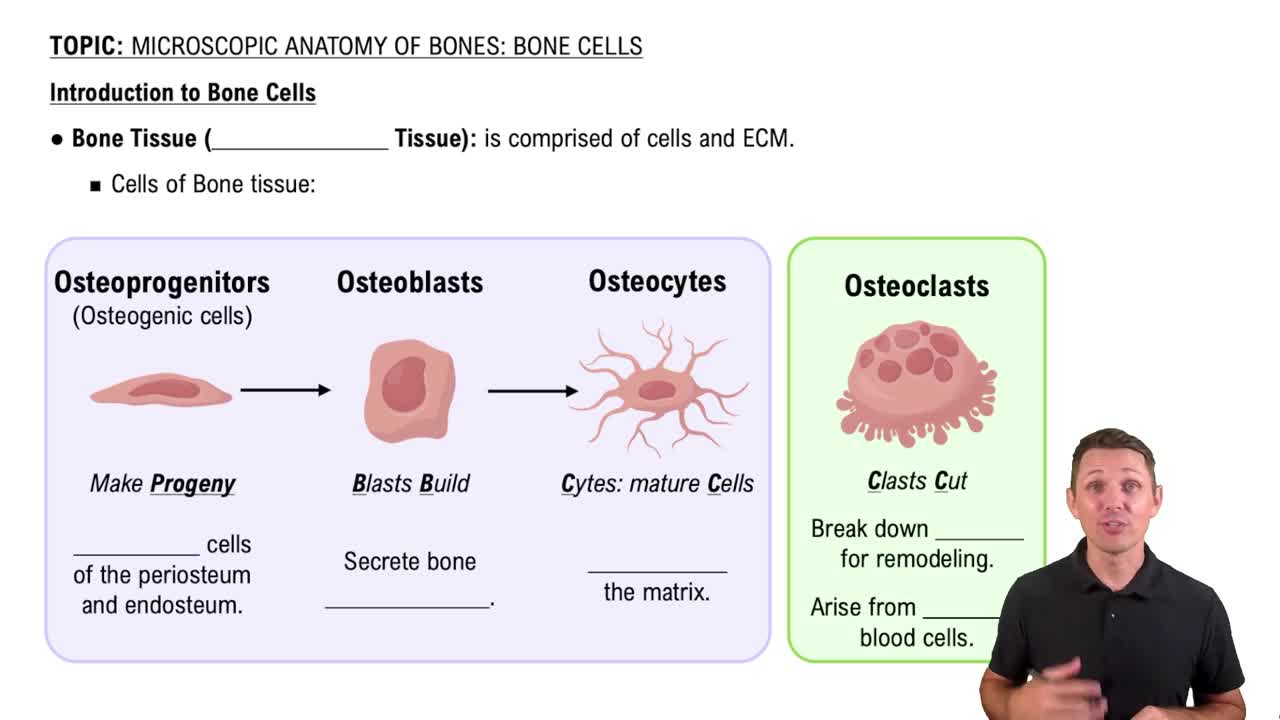Textbook Question
Mark the following statements about bone tissue as true or false. If a statement is false, correct it to make a true statement.
f. Osteocytes are mature and less active osteoblasts that have become surrounded by bone ECM.
382
views
 Verified step by step guidance
Verified step by step guidance



Mark the following statements about bone tissue as true or false. If a statement is false, correct it to make a true statement.
f. Osteocytes are mature and less active osteoblasts that have become surrounded by bone ECM.
Fill in the blanks: The subunit of compact bone is the _____ . It consists of rings of bone matrix called ______that surround a structure called the______ that contains blood vessels and nerves. Other structures called _______also contain blood vessels and nerves. Osteocytes are housed in_____and communicate via_______.
Explain how abnormal bone structure could affect muscle function.